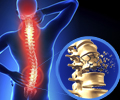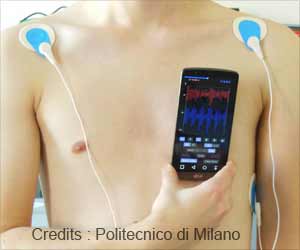‘HIT-Reha,’ a medical suit, can improve rehabilitation for patients with severe spinal cord injuries.

AI supports rehabilitation after spinal cord injury
Go to source). Over the course of three years, they will work on an AI-supported solution that combines electrical muscle stimulation with artificial tendons to aid movement and respond to the patients' intended motions. The project, known as "HIT-Reha," has received funding of approximately one million euros from the German Research Foundation, with FAU receiving 357,000 euros. Spinal cord injuries resulting from accidents, tumor operations, or infections have a profound impact on the affected individuals' lives. Simple daily tasks like eating, dressing, or personal hygiene become challenging or even impossible.
However, such injuries may not be entirely irreversible. When the long nerve fibers are not completely disconnected from the brain, some degree of motor control can still be retained. Prof. Dr. Claudio Castellini from the Chair of Assistive Intelligent Robotics at FAU explains that there is a good chance of regaining mobility in such cases, particularly within the first twelve months after the injury when neuronal regeneration and the formation of new networks are possible.
‘Scientists are developing an intelligent suit using AI, electrical muscle stimulation, and artificial tendons to enhance rehabilitation for severe spinal cord injuries. #SpinalCordInjuries’





Advertisement
Standard Treatment does not Exploit the Full Potential
The rehabilitation of arm and hand function is mainly based on the repeated execution of mobility exercises, where patients are required, for example, to grasp a cylinder and move it to a certain place. Patients are supported by qualified therapists, or at times also by robots.The methods used include functional electrical stimulation (FES), in which electrodes trigger targeted muscle contractions, as well as exoskeletons or suits. These are orthoses that support and assist movement using pulley mechanisms or inflatable air chambers.
“Although great progress has been made in recent years, the therapies which are currently available do not correspond to the principles of motor learning,” Castellini explains. “Firstly, especially weak muscles are not targeted sufficiently, and secondly, patients are not actively encouraged to execute useful motor exercises. Our experience has shown that this leads to patient engagement waning over time.”
Combined with the fact that current rehabilitation measures are not sufficiently tailored to patients’ individual requirements and abilities, this means that the full potential for treatment is not fully exploited.
Advertisement
Integrated Suit Recognizes Intended Movements
Over the next three years, Claudio Castellini aims to work together with the Institute of Computer Science at Heidelberg University and the Department of Experimental Neurorehabilitation at Heidelberg University Hospital to develop a suit that is hoped to significantly improve the success of therapy after spinal cord injuries.The Exo-Suit consists of a compression jacket, arm cuffs, and gloves and combines the support systems available to date such as FES and pulley mechanics, but has one special addition: AI-supported recognition of patients’ intended movements. “Integrated sensors measure muscle activity,” explains Marek Sierotowicz, a doctoral candidate involved in the project.
“Self-learning algorithms take this input and use it to calculate the patient’s intended movement and adjust the assistance systems accordingly.” Specifically, this means that the
Advertisement
Monitoring Intention Allows Targeted and Gentle Therapy
FAU is predominantly responsible for developing methods to perceive the patient’s intended movements. For this to work, researchers first have to construct a complete virtual model of the anatomical structure of the muscles and skeleton and train it accordingly. “We will carry out our initial tests with people who are not disabled and gather as much data as possible,” says Sierotowicz.“The better we train AI, the more reliably we will be able to recognize movement patterns and the more accurately the assistance systems will be able to work in the future.” That is not only necessary for precise movement support, the intelligent interplay between EFS and robotic pulley systems also ensures a more gentle treatment.
Experience has shown that using FES alone requires a high intensity of simulation and patients often find it unpleasant. Researchers are convinced that their invention will lead to a significant improvement in the success of rehabilitation after a spinal cord injury.
Reference:
- AI supports rehabilitation after spinal cord injury - (https://www.fau.eu/2023/06/29/news/research/ai-supports-rehabilitation-after-spinal-cord-injury/)
Source-Eurekalert












